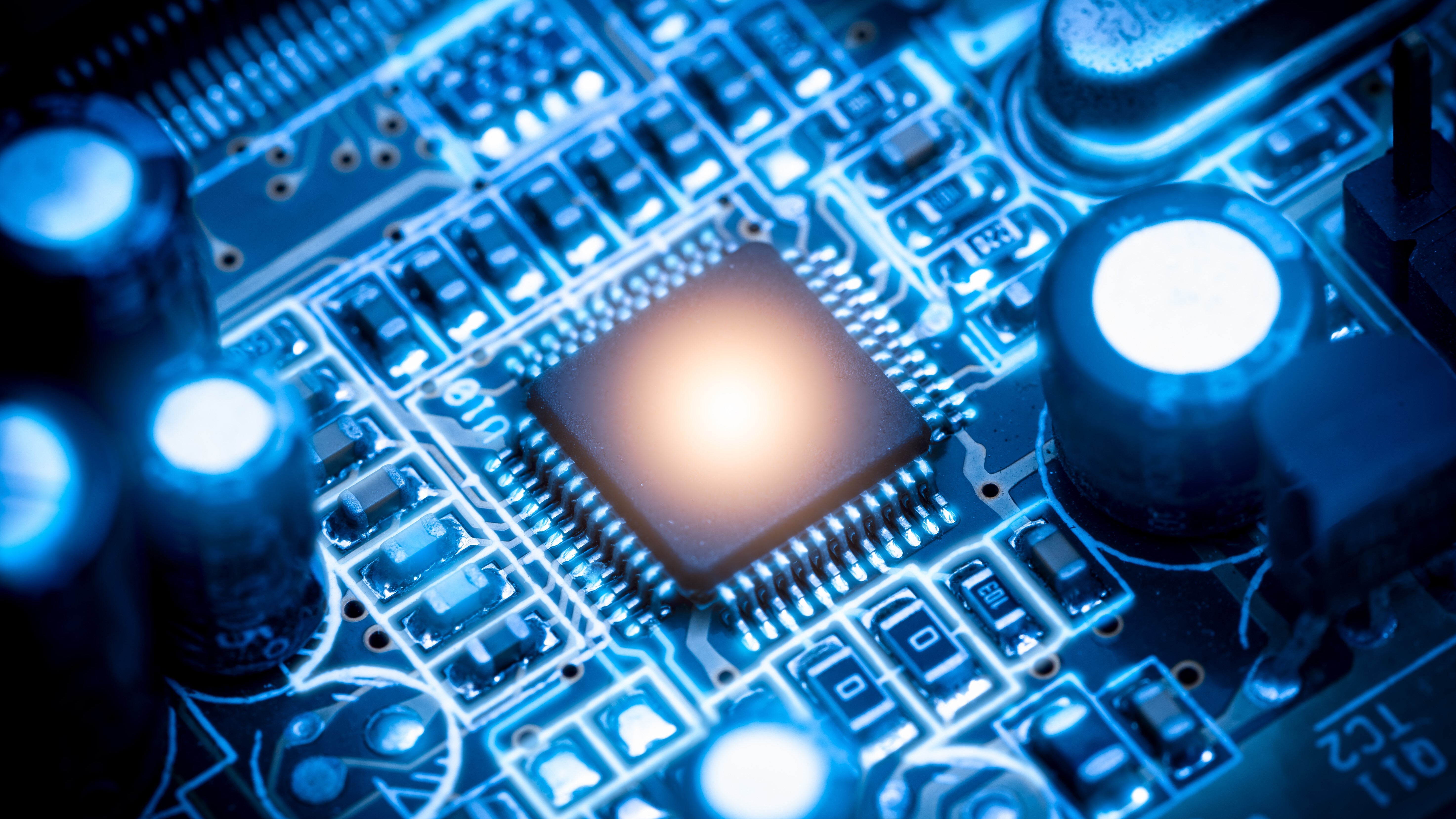Quantum internet is possible using standard Internet protocol — University engineers send quantum signals over fiber lines without losing entanglement
Quantum signals sent over IP overcome noise on live, commercial fiber outside of the lab

Engineers at the University of Pennsylvania have successfully sent quantum signals over a standard internet connection with fiber-optic cables in the real world. The researchers have published their work in Science, taking the quantum internet from theory to reality by using existing internet systems.
Quantum signals are famously weak, unable to be measured without losing their quantum entanglement and becoming unreadable with too much noise. But engineers have managed to send the signals over the same busy internet infrastructure that standard IP signals occupy.
This transmission is possible due to the "Q-Chip", the University of Pennsylvania's silicon chip for coordinating traditional and quantum signals over the internet. Short for Quantum-Classical Hybrid Internet by Photonics, the Q-Chip can bundle standard and quantum signals into a package that can be sent successfully across a city's fiber-optic internet lines. The chip can both send and receive these linked signals, automatically correcting for noise without measuring the quantum-linked signals.
Quantum computing is an entirely different realm from traditional computing. Where normal computers use transistors, bits, and electrons to perform computations, represented with 0s and 1s, states of on and off, quantum computing starts from a different point entirely. Using qubits, quantum computers take advantage of quantum entanglement, allowing qubits to represent states of 0, 1, and any other of countless variations of these two states.
But quantum entanglement is tricky to work with, as quantum signals that are measured lose their quantum properties. In Schrödinger's thought experiment, a cat placed in a closed box with a radioactive isotope cannot be confirmed to be alive or dead until the box is opened and the cat is observed. Likewise, quantum particles can exist in the state of superposition (neither 0 nor 1) only until they are observed, at which point they lose their quantum relationship and become effectively 0 or 1. This makes sending these quantum signals over an internet connection highly difficult.
"Normal networks measure data to guide it towards the ultimate destination," said Robert Broberg, a doctoral student on the project who was interviewed by Phys.org. "With purely quantum networks, you can't do that, because measuring the particles destroys the quantum state."
To solve this problem, the Q-Chip pairs the quantum signal with a light-based standard internet signal in a train-like combo. The standard internet signal acts like an engine for routing, with the quantum signal riding alongside it like cargo, never being measured by either end of its internet connection. This relationship also works to correct for noise; as both the sending and receiving Q-Chip know what the standard signal is meant to be, it can error-correct the light-based signal and infer how to correct the quantum signal as well.
Get Tom's Hardware's best news and in-depth reviews, straight to your inbox.
"By showing an integrated chip can manage quantum signals on a live commercial network like Verizon's, and do so using the same protocols that run the classical internet, we've taken a key step toward larger-scale experiments and a practical quantum internet," shared Liang Feng, the senior author of the paper.
The Q-Chip system can theoretically work anywhere along the Verizon fiber optic network in Philadelphia, where the university is located, as well as any other metro area's internet infrastructure. Further research will still be needed to successfully repeat quantum signals over long distances, which will be necessary to facilitate quantum internet connections between cities or beyond.
As quantum computing continues to march toward relevance and usefulness in the real world, this research on enabling quantum signals to be sent via existing Internet infrastructure is invaluable. What comes next for quantum is, as always, uncertain, but governments and corporations alike are continually working to be the first to enable its use in real-life applications.
Follow Tom's Hardware on Google News, or add us as a preferred source, to get our up-to-date news, analysis, and reviews in your feeds. Make sure to click the Follow button!

Sunny Grimm is a contributing writer for Tom's Hardware. He has been building and breaking computers since 2017, serving as the resident youngster at Tom's. From APUs to RGB, Sunny has a handle on all the latest tech news.
-
chaos215bar2 This:Reply
This transmission is possible due to the "Q-Chip", the University of Pennsylvania's silicon chip for coordinating traditional and quantum signals over the internet. Short for Quantum-Classical Hybrid Internet by Photonics, the Q-Chip can bundle standard and quantum signals into a package that can be sent successfully across a city's fiber-optic internet lines. The chip can both send and receive these linked signals, automatically correcting for noise without measuring the quantum-linked signals.
Is not at all the same as this:
The researchers have published their work in Science, taking the quantum internet from theory to reality by using existing internet systems.
Sounds like they're mixing in quantum protocols with standard IP over the same fiber lines. But that's not the same as quantum over IP, which is what the author seems to be implying. No quantum signal is going to survive transmission through standard internet infrastructure. Individual fiber lines are different, because whether or not you take advantage of it, high quality optical fiber does preserve quantum properties of the light it's transmitting. -
shady28 https://external-content.duckduckgo.com/iu/?u=https%3A%2F%2Fwww.thecompanion.app%2Fcontent%2Fimages%2F2023%2F04%2FThe-Lawnmower-Man-373.jpg&f=1&nofb=1&ipt=c34a26bba24ee82af3def4d866f80cb52580375f8699ee7605af018fef26cc82Reply -
Sam Hobbs I wonder how well the author really understands quantum computing (quantum anything) or if they are repeating what they have been told without understanding it.Reply
Non-quantum signals can be amplified. Transmission over standard internet protocol (IP) requires that the signal be amplified over its path, right? At that moment at least, how is the quantum signal different from other data? I assume there is not a significant difference. There are many things that I do not understand. I think that probably what is happening is that the quantum signals are somehow converted to non-quantum signals and then back to quantum signals, similar to what a modulator-demodulator (modem) does for analog signals.
The article says:
allowing qubits to represent states of 0, 1, and any other of countless variations of these two states
As best as I understand, 0 and 1 can only be expressed as either 0 or 1. Or is that intended to say that qubits can represent combinations of 0 and 1, such as in binary numbers?
The only part of this that I can understand is they have successfully sent quantum signals over a standard internet connection with fiber-optic cables. I have no idea of why I should care. -
scotinus Reply
That summary doesn't make any sense. The only connection to "internet" is the use of optical fibers. IP does not support Qubits!Admin said:A recent experiment by University of Pennsylvania researchers found that quantum signals can be sent over standard internet protocol (IP). The research, done on the University's fiber network, uses a locomotive-style approach to pair a traditional light signal "engine" with quantum signal cargo and send quantum signals over the internet without observing the particles.
Quantum internet is possible using standard Internet protocol — University engineers send quantum signals over fiber lines without losing entanglement : Read more -
Nicholas Steel Reply
This confuses me, if you're using the normal signal to correct errors in the quantum signal than what's the point of the quantum signal... since you're still reliant on the normal signal for correctness. So performance and variables of the quantum signal can't vary from the normal signal which makes me wonder wtf is the point.Admin said:A recent experiment by University of Pennsylvania researchers found that quantum signals can be sent over standard internet protocol (IP). The research, done on the University's fiber network, uses a locomotive-style approach to pair a traditional light signal "engine" with quantum signal cargo and send quantum signals over the internet without observing the particles.
Quantum internet is possible using standard Internet protocol — University engineers send quantum signals over fiber lines without losing entanglement : Read more
I guess the point is to see how far the quantum signal can be sent before error correction is required and work towards improving this to the point of no longer needing the normal signal anymore.